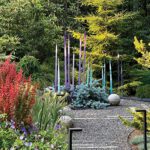Glorious grass
June 1, 2022
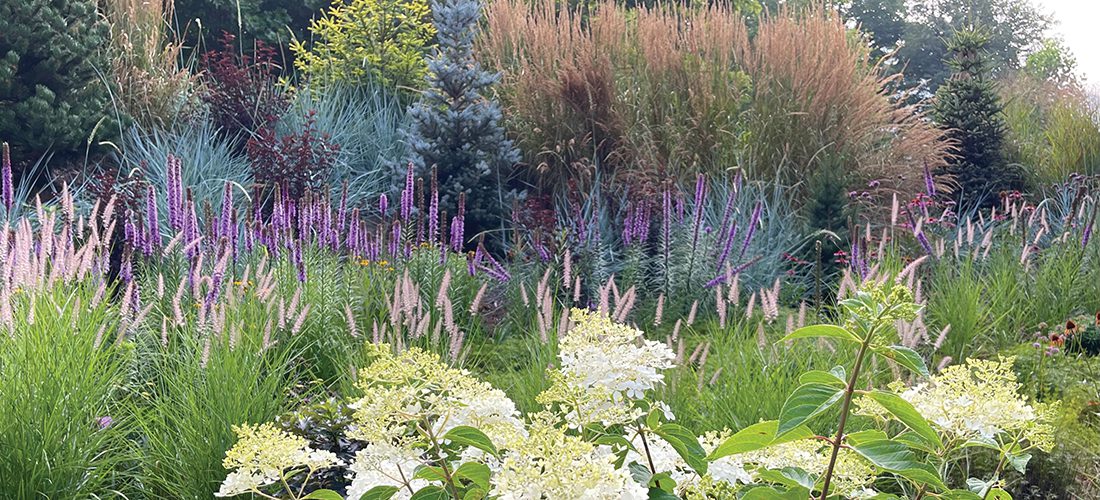
Ornamental grasses earn a place in the garden.
by Jay Sifford
In my landscape design practice, I frequently run across folks who ask for a “no-maintenance” or “low-maintenance” garden. After half-jokingly quipping, “So we will plant plastic or silk!” my conversation immediately heads toward ornamental grasses and carexes. Looking beyond the overpowering pampas grass or the overused liriope or “monkey grass” (which isn’t a grass at all but rather a member of the lily family), there are many kinder and gentler grasses that fit the bill of being low maintenance, drought- and deer-resistant structural elements in the garden. Additionally, they are adaptable to many styles of garden design, from cottage to contemporary to pollinator-friendly meadows. Finally, grasses play well with other garden plants, accentuating vertical perennials such as liatris and coneflower, or providing complementary color and drama to shrubs like dark-leafed ninebarks and blue-needled conifers.
With so many choices, a good starting point is to analyze the conditions present in your garden. Is your soil wet, dry or consistently moist? Are you working with clay, rich soil or rocky soil? Does your garden receive full sun, morning or afternoon sun, or full shade? From a design standpoint, are you looking for a strong vertical element, or a looser and more relaxed shape? Are you looking for a spreading grass that can help prevent erosion on a slope, or a clumping grass that politely stays where you plant it? The good news is there are grasses and the closely-related carexes for nearly every situation.
As a general rule, grasses prefer a minimum of a half-day of direct sun and average to dry soil. If the soil is very rich with amendments or grasses are fertilized or over-watered, they can become weak and floppy. Most grasses thrive on some neglect and tough love. Carexes, however, can work well in shadier gardens, and, depending on the species or cultivar, also can work in richer soils that range from very wet and boggy to dry.
Unless you are attempting to create rhythm through your garden with vertical single specimens dotting back and forth along a garden path, consider maximizing impact by planting larger groups of grasses. Doing so brings drama and cohesiveness to a space. If possible, attempt to site your grasses in areas of your garden where they will be backlit by the morning or late afternoon sun. This can produce a mesmerizing magical glow. Siting groups of grasses in open areas where breezes are common, the grasses will produce a kinetic effect as they flirt and dance with the prevailing wind.
With regard to garden maintenance, there’s nothing easier than grasses. Low water usage, little to no fertilizer, and simply cutting them back to within several inches of the ground in very early March before new growth appears makes caring for them simple. Many carexes do not need to be cut back at all and generally prefer average to moist soil.
Five commonly available grasses and how to use them
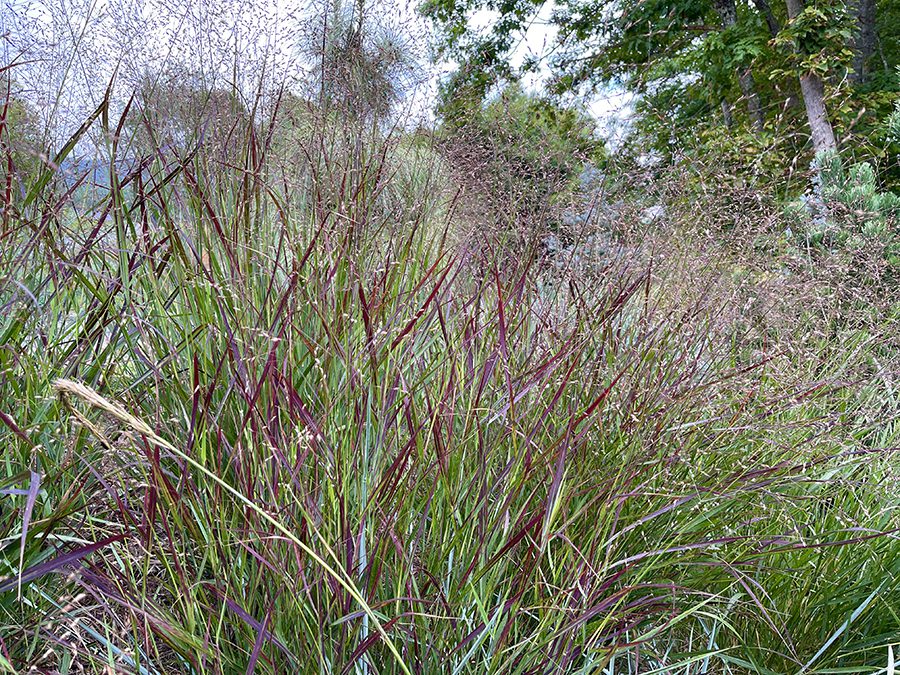
Panicum. Commonly known as switchgrass, Panicum is a tough native grass for sunny locations. Normally thought of as a drought-resistant grass, it can also be used in areas that are somewhat moist but not boggy. Switchgrass is a warm-season grass, which means that it emerges in mid-spring and works well in our hot humid summers. They are vertical growers with a height of 2 to 4 feet, depending on the variety. ‘Shenandoah’ is a popular cultivar that sports bright burgundy atop green foliage. In midsummer, it produces clouds of seed heads.
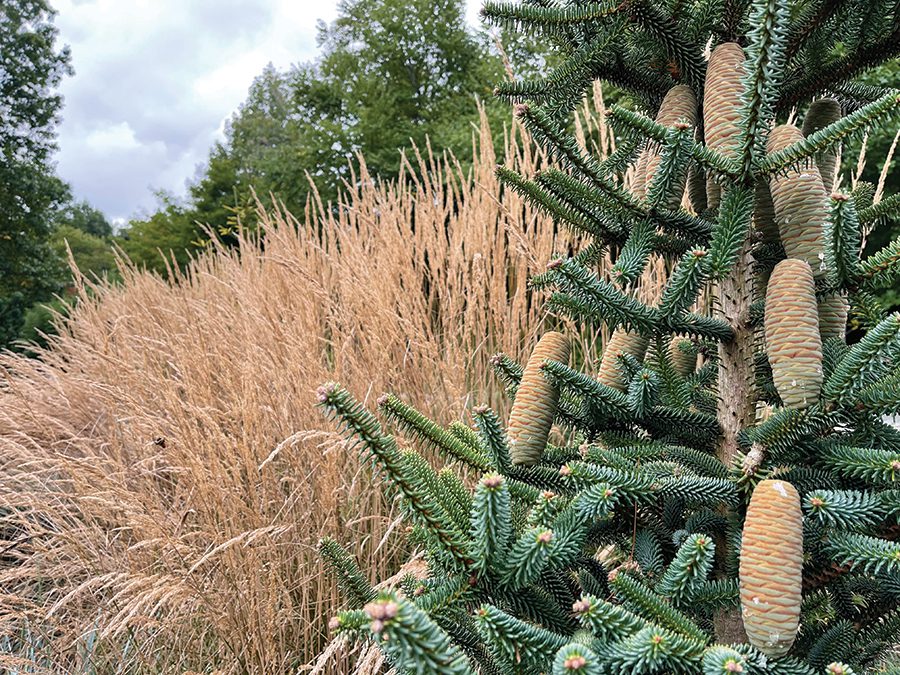
Calamagrostis. Commonly called feather reed grass, Calamagrostis is a cool-season grass, which means that it emerges earlier than does Panicum but can look a bit tattered by midsummer in our area. ‘Karl Foerster’ is the most popular cultivar. Its vertical growth pattern makes it a valuable addition to contemporary gardens or in applications in which vertical rhythm is desired.
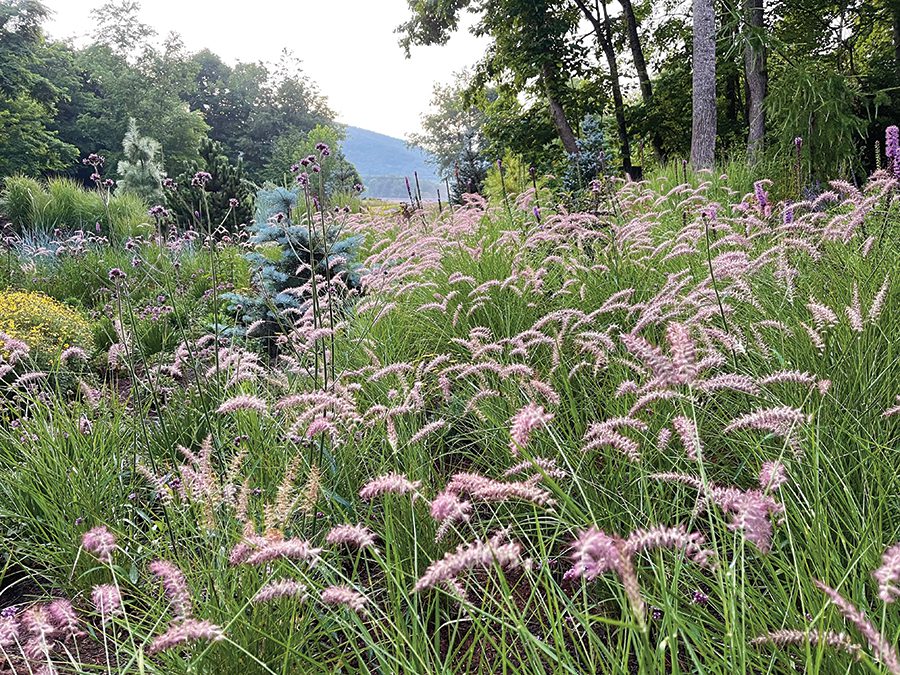
Pennisetum. Commonly called fountain grass, most but not all Pennisetum species and cultivars are hardy in our area. These generally are shorter than Panicum and Calamagrostis, topping out in the 1.5- to 2-foot range. They are warm-season grasses that hold up extremely well in our hot humid summers. Popular hardy cultivars include ‘Karley Rose’ and ‘Cassian.’ Be advised that the varieties with purple foliage are generally not hardy in our area and should be treated as annuals. They can rot in winter if the soil stays too wet, so site in areas with good drainage. Pennisetums work exceptionally well when interplanted with flowering perennials such as verbena bonariensis, veronia and liatris.
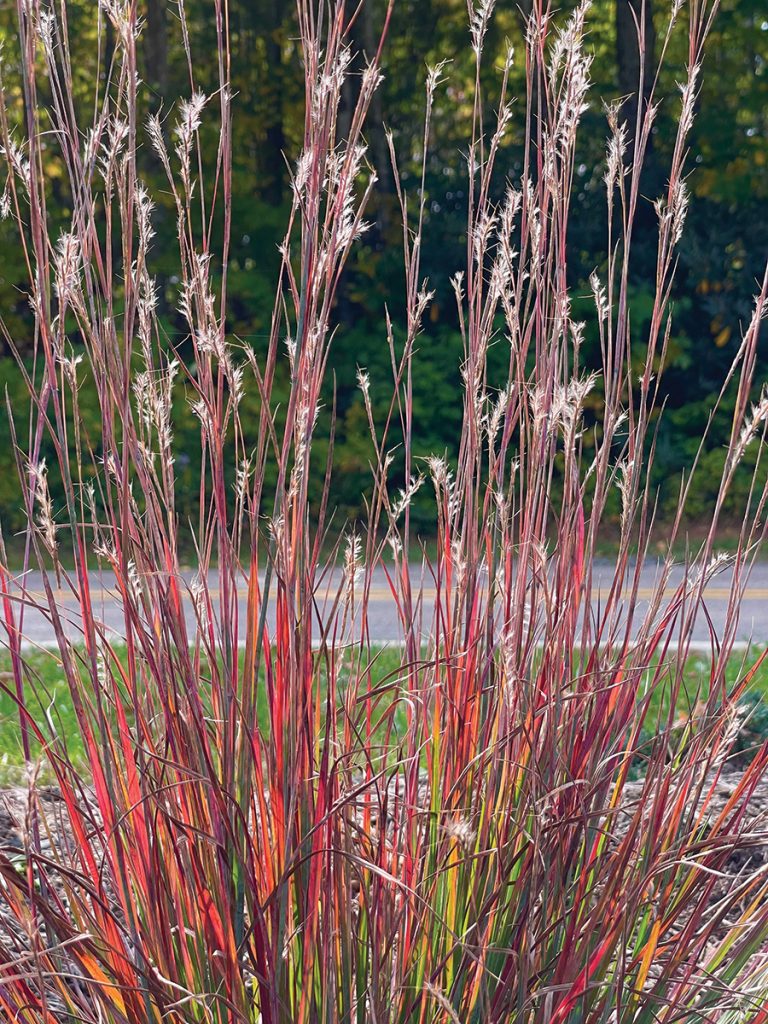
Schizachyrium scoparium. Commonly referred to as little bluestem, Schizachyrium is a shorter clumping native grass for sunnier areas in the garden. It puts on a midsummer show by producing taller colorful growth and seed heads. It is particularly attractive when backlit by the afternoon sun.
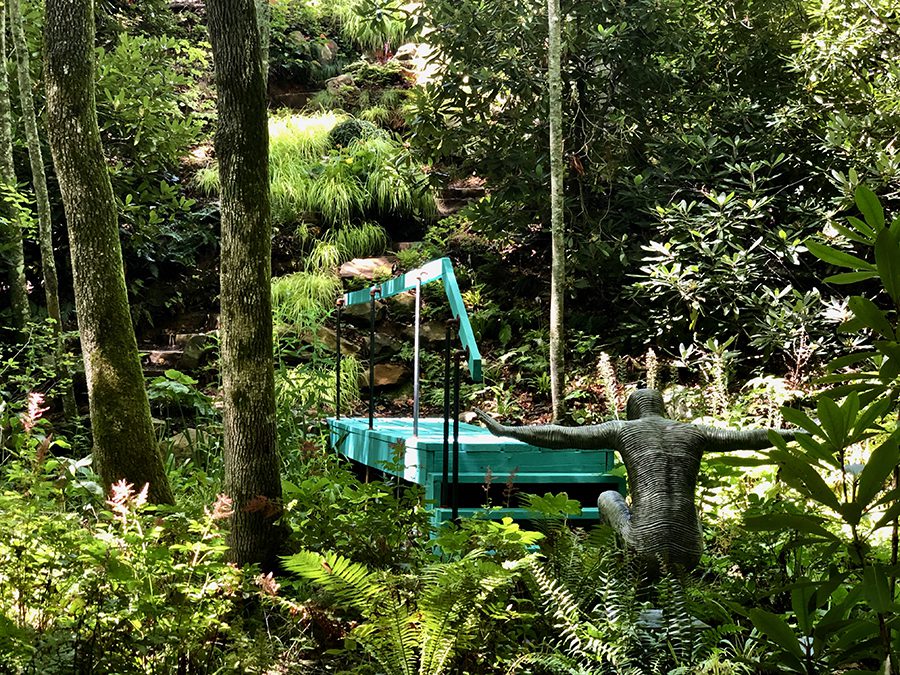
Carex. If your garden is shady and moist, carexes are your answer. While some, like the coppery New Zealand carex, require almost full sun, most are at home in light to medium shade or filtered sunlight. A favorite is ‘Everillo’ carex: While most grasses turn brown in late fall and provide textural winter interest, ‘Everillo’ shines through, with four season chartreuse foliage. Attaining a height of 1 to 1.5 feet, it plays well with ferns and hostas. Additionally, its color works magic in darker areas that need brightening. In fact, planting in larger groupings can create the illusion of sunlight piercing the woodland canopy and creating patterns on the forest floor.
Give these grasses a try and, with their texture and kinetic movement, watch your garden move to the next level. SP
Photographs are courtesy of Jay Sifford. Sifford is a Charlotte-based landscape designer who specializes in contemporary, Asian and transitional gardens. His work has been featured in Southern Living, Country Gardens and Fine Gardening, as well as Houzz and several books. siffordgardendesign.com
